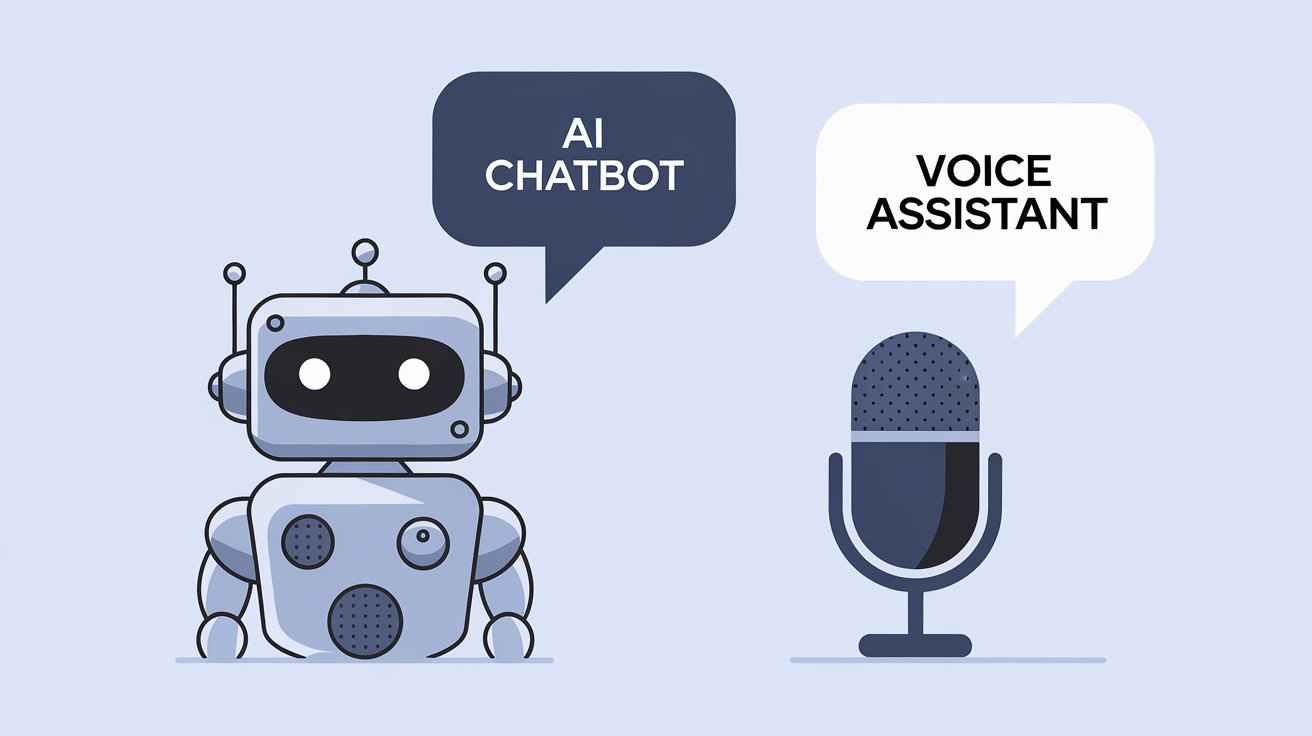AI chatbots vs voice assistants are transforming the way businesses and consumers interact with technology. While both use artificial intelligence to enhance user experience, they serve different purposes. This article explores the distinctions between AI chatbots and voice assistants, highlighting their features, benefits, and challenges.
1. What are AI Chatbots?
AI chatbots are intelligent programs designed to engage users in text-based conversations. These chatbots use natural language processing (NLP) to understand and respond to text inputs, making them ideal for customer service applications.
- Key Benefits: AI chatbots can quickly address customer queries, automate repetitive tasks, and deliver personalized interactions. As businesses increasingly rely on digital communication, platforms like Zendesk have integrated AI chatbots to improve customer support.
2. What are Voice Assistants?
Voice assistants, such as Amazon’s Alexa, Apple’s Siri, and Google Assistant, allow users to interact with technology using voice commands. These systems use speech recognition to process spoken words and perform tasks like setting reminders, controlling smart home devices, or answering questions.
- Key Benefits: Voice assistants provide hands-free control, making them ideal for users on the go or when multitasking. They offer convenience and streamline tasks by responding to simple commands. Explore more on Amazon Alexa or Google Assistant.
3. AI Chatbots vs Voice Assistants: Key Differences
- Mode of Interaction: The most significant difference between the two is the interaction mode. AI chatbots typically rely on text-based communication, while voice assistants use spoken language. This makes voice assistants better suited for situations where users cannot or prefer not to type, such as while driving.
- Use Cases: AI chatbots are most effective in customer service, where users need immediate responses to inquiries. Voice assistants excel in controlling smart devices and managing daily tasks hands-free, like adjusting the thermostat or controlling music.
- Technological Complexity: Voice assistants face challenges in speech recognition, especially with various accents or noisy environments. On the other hand, AI chatbots are better equipped to handle text input but can struggle with ambiguous or complex language.
4. Which One Should You Choose?
- For Customer Support: If your goal is to provide quick, text-based support on your website or app, AI chatbots are the best option. They can handle customer queries around the clock, improving efficiency and user satisfaction. For example, platforms like Zendesk offer AI-powered chatbot integrations for businesses.
- For Smart Home Control: If you’re looking for a solution to control your home automation system with voice commands, then voice assistants are the better choice. These assistants, such as Alexa or Google Assistant, allow you to manage smart home devices seamlessly.
5. Challenges with AI Chatbots and Voice Assistants
- AI Chatbots: One of the main challenges with AI chatbots is their inability to handle nuanced or complex conversations. While they are great at answering specific queries, they may not always understand the context or provide appropriate responses.
- Voice Assistants: Voice assistants often struggle with recognizing speech in noisy environments or understanding different accents. They also require clear enunciation to respond accurately.
Conclusion
Both AI chatbots and voice assistants are revolutionary technologies that bring immense value to businesses and consumers alike. However, understanding their differences is essential when selecting the right technology for your needs. If your focus is on customer service and text-based support, AI chatbots are the optimal choice. On the other hand, if you want to manage tasks and control devices with voice, voice assistants are the ideal solution.


Pingback: What Are AI Chatbots and How Do They Work? - Gadget Fixers
Pingback: How to Train an AI Chatbot Without Coding? - Gadget Fixers